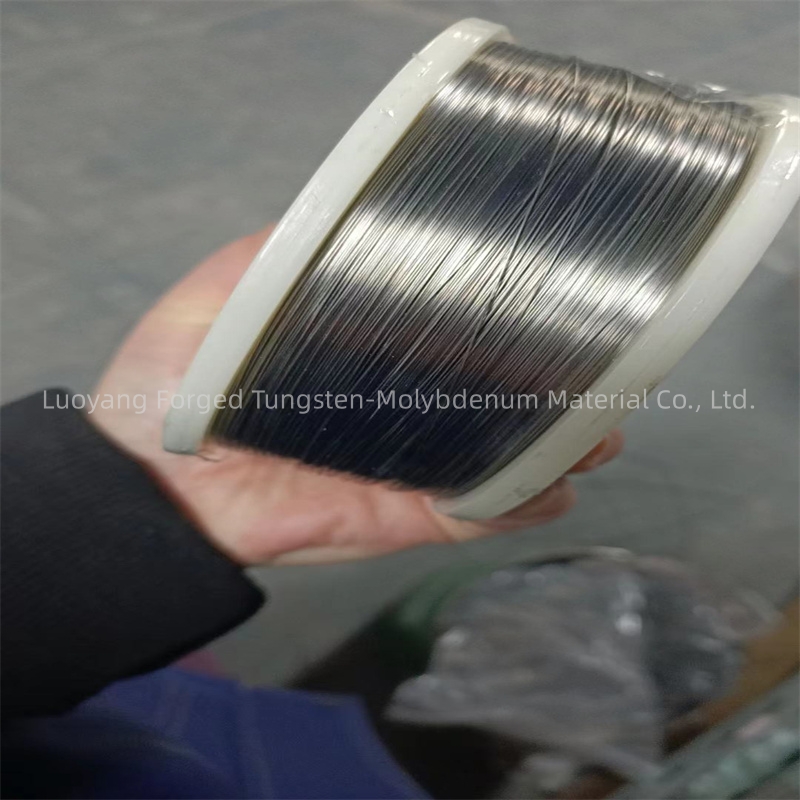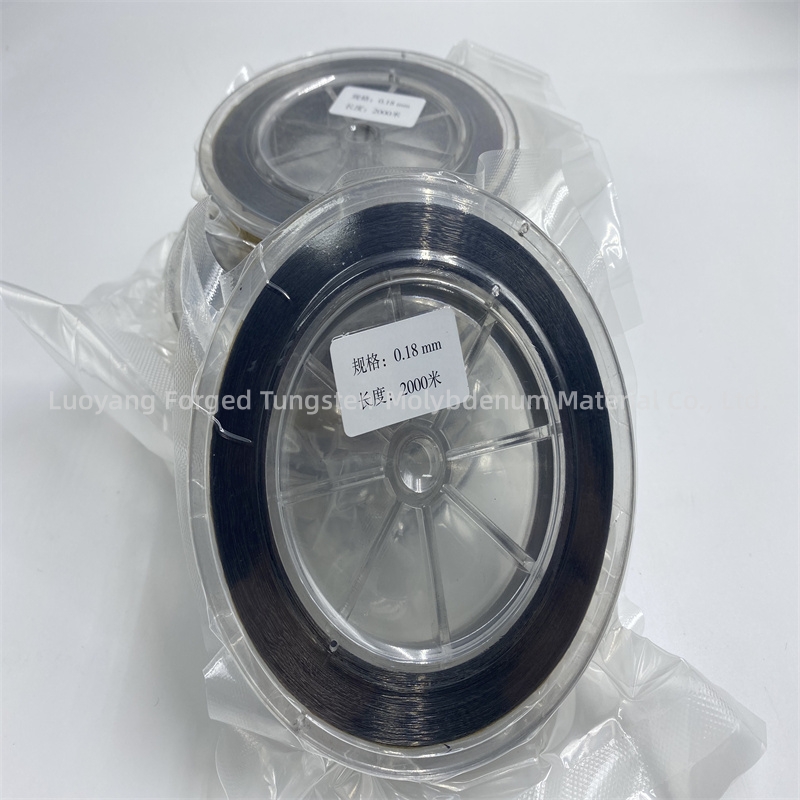Tungsten wire has a wide range of applications in various fields, including: Lighting: Tungsten filament is commonly used in the production of incandescent light bulbs and halogen lamps due to its high melting point and excellent electrical conductivity. Electronics: Tungsten wire is used to make electronic equipment such as vacuum tubes, cathode ray tubes, and various electrical contacts. Heating elements: Tungsten wire is used as a heating element in high temperature furnaces and other heating applications where its high melting point and high temperature stability are beneficial. Welding and cutting: Tungsten wire is used as an electrode for tungsten inert gas welding (TIG) and plasma cutting due to its high melting point and heat resistance. Medical and Scientific Instruments: Tungsten wire is used in medical equipment such as X-ray tubes and scientific instruments such as electron microscopes. Aerospace: Tungsten wire is used in aerospace applications due to its ability to withstand extreme temperatures and harsh environments. These are just a few examples of tungsten wires that have important applications in many fields due to their unique physical and chemical properties.
The prodction f tungsten wire involves several steps, including tungsten powder production, drawing and heat treatment. The following is a general overview of the tungsten wire manufacturing process: Tungsten powder production: This process first produces tungsten powder by reducing tungsten oxide (WO3) with hydrogen at high temperatures. The resulting tungsten powder is then pressed into a solid form, usually in the shape of a rod or wire. Wire Drawing: The tungsten rod or wire is then subjected to a series of drawing steps, pulling it through progressively smaller dies to reduce its diameter and increase its length. This process continues until the desired wire diameter is reached. Annealing: The drawn tungsten wire is then annealed, a heat treatment process that involves heating the wire to high temperatures and then slowly cooling it to eliminate internal stress and improve its ductility and strength. Cleaning and Surface Preparation: Tungsten wire is thoroughly cleaned to remove any surface contaminants and then surface treated as necessary to improve its surface finish and enhance its performance for your specific application. Inspection and testing: Quality inspection of finished tungsten wire, including dimensional accuracy, surface finish and mechanical properties. Various tests can be performed to ensure that the wire meets specified requirements, such as tensile strength, elongation, and conductivity. Packaging and Storage: The final step involves coiling or wrapping the tungsten wire and packaging it for shipping or storage, ensuring that it is protected from environmental factors that may affect its performance. It’s worth noting that the specific details of tungsten wire processing can vary depending on the intended application and the manufacturer’s process and equipment. Manufacturers can also take additional steps to meet the requirements of specific industries and applications.
Post time: Dec-21-2023


